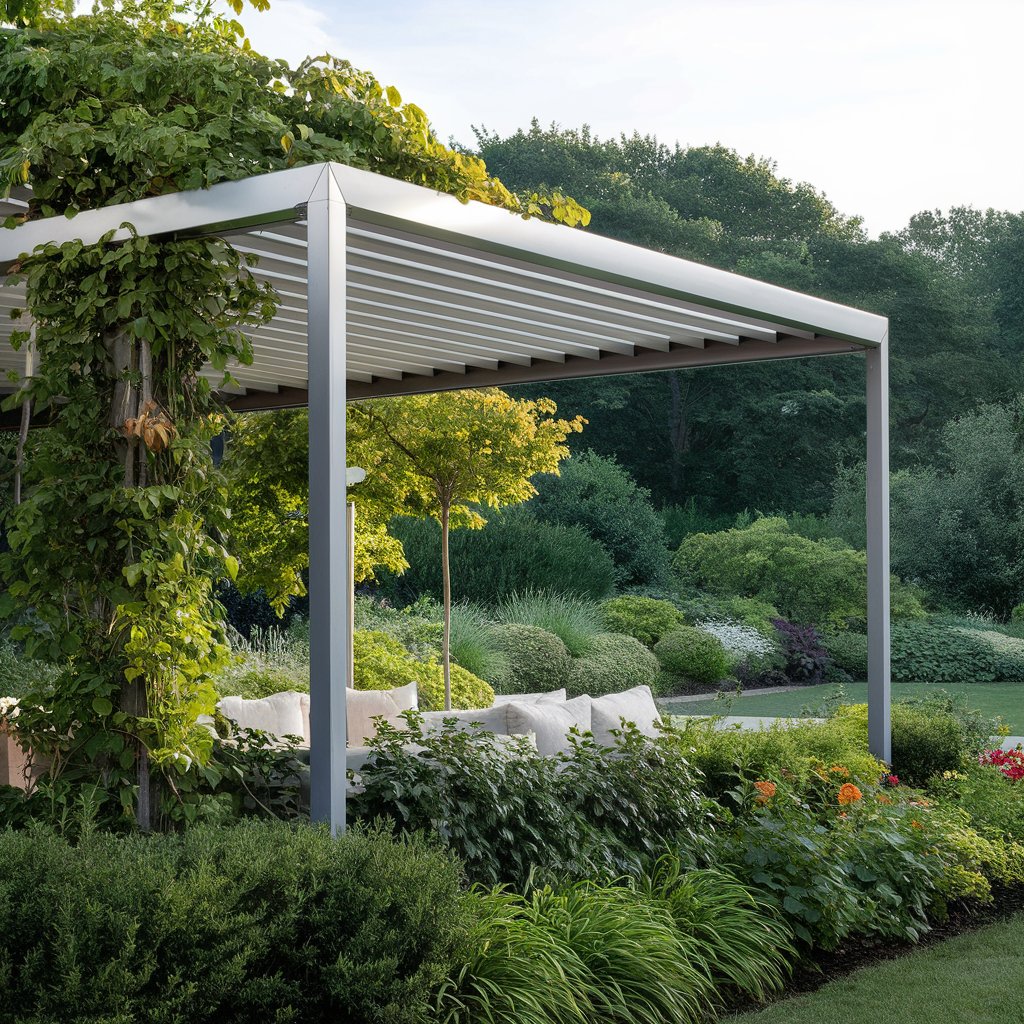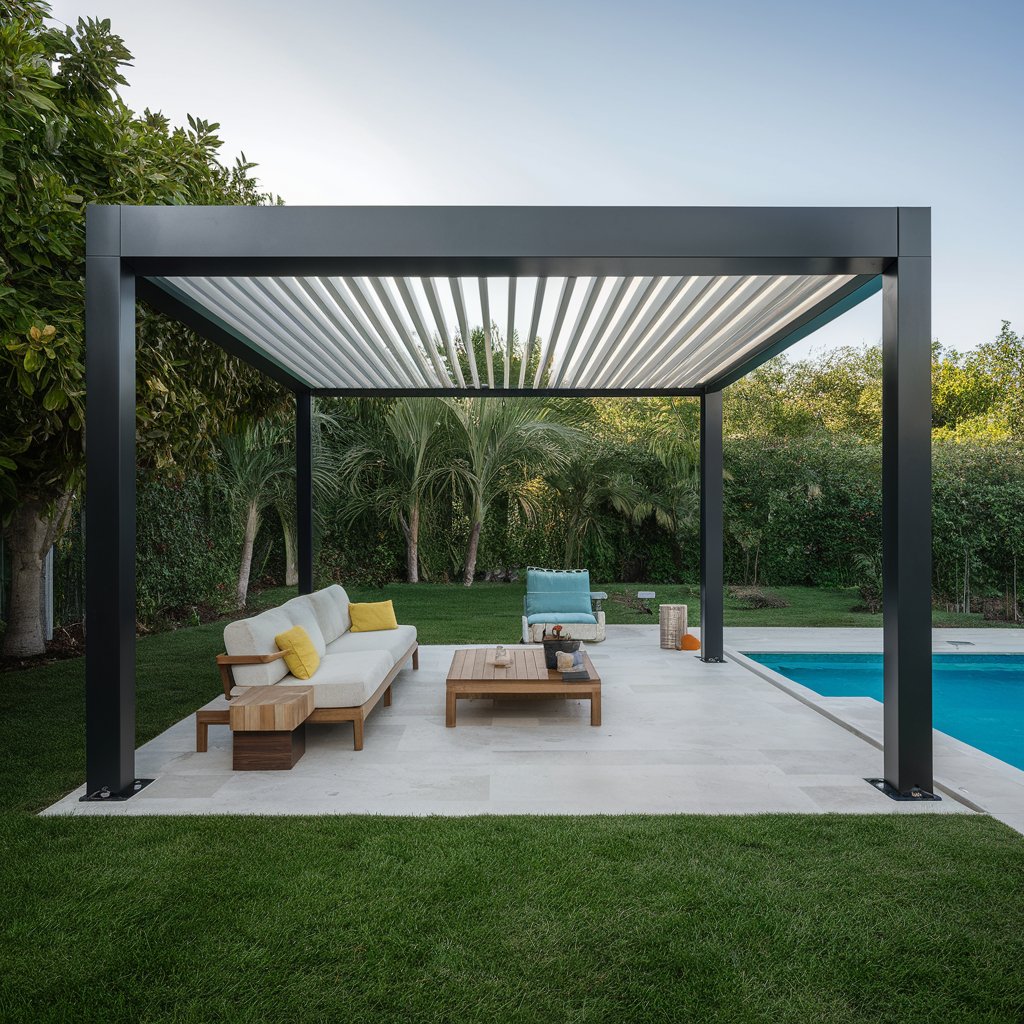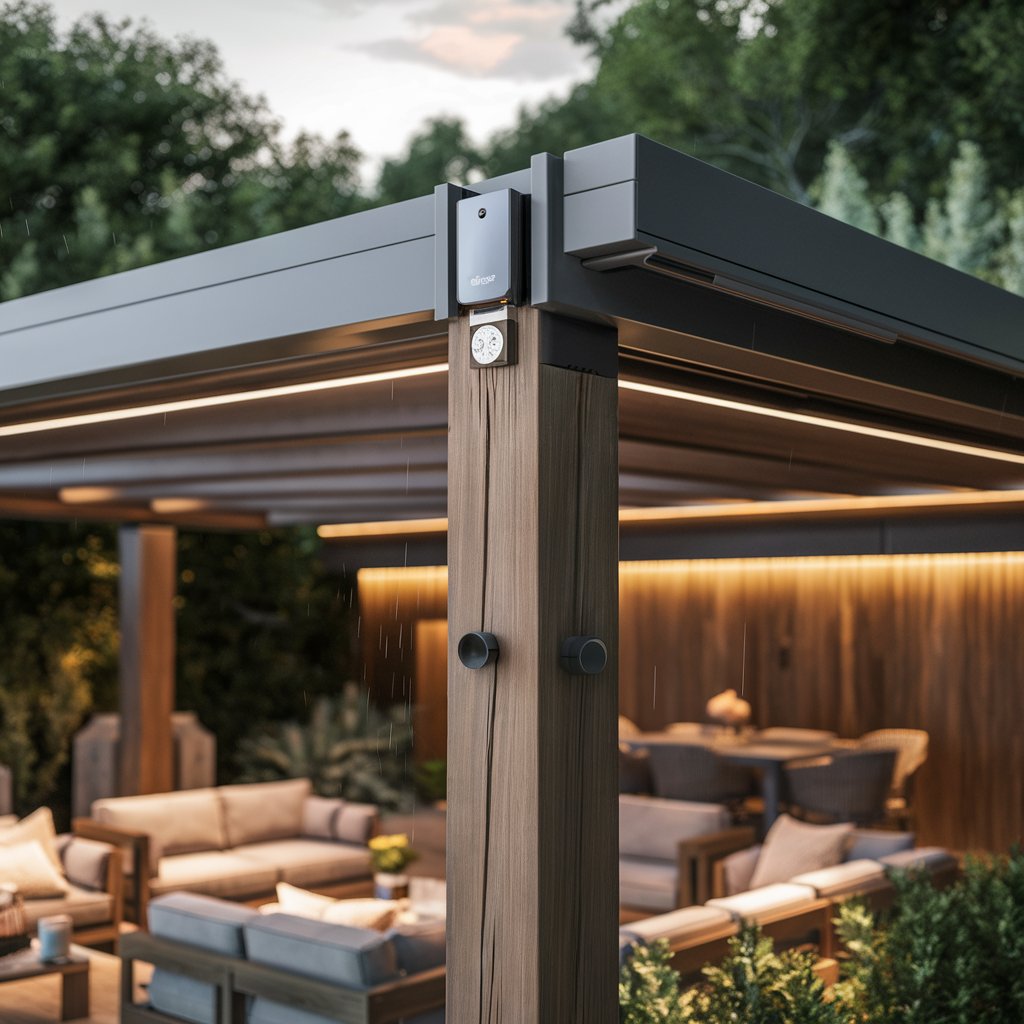Introduction
Residential Pergolas have become an integral part of residential landscapes, offering both aesthetic appeal and practical benefits. These structures, characterized by their open, latticed roofs supported by columns or posts, provide a versatile outdoor living space that enhances the beauty and usability of any backyard. In this guide, we’ll delve into the world of residential pergolas, exploring their history, types, materials, design considerations, benefits, and maintenance tips.

History of Pergolas
Pergolas boast a rich history that dates back to ancient times. The term “pergola” is derived from the Latin word “pergula,” which means a projecting eave. These structures were commonly used in ancient Egypt, Greece, and Rome to provide shade and support for climbing plants. During the Renaissance, pergolas became a prominent feature in European gardens, symbolizing luxury and sophistication.
Types of Pergolas
There are several types of pergolas, each with its unique characteristics and benefits. The primary types include:
Freestanding Pergolas
Freestanding pergolas are versatile structures that can be placed anywhere in the yard. They are not attached to any other structure and often serve as focal points in the landscape. These pergolas are ideal for creating separate outdoor living spaces, such as dining areas or lounges.
Attached Pergolas
Attached pergolas are connected to a building, typically a house or a garage. They extend the living space of the home and provide a seamless transition between indoor and outdoor areas. Attached pergolas are perfect for patios or decks, offering shade and enhancing the architectural appeal of the house.
Arched Pergolas
Arched pergolas feature curved beams that create a more decorative and elegant look. The arches can vary in height and depth, adding a unique aesthetic to the pergola. These structures are often used to create dramatic entrances or focal points in a garden.
Louvered Pergolas
Louvered pergolas have adjustable slats that can be tilted to control the amount of sunlight and ventilation. This type of pergola offers flexibility and comfort, allowing homeowners to adjust the shade and airflow according to their needs. Louvered pergolas are ideal for areas with varying weather conditions.
Canopy Pergolas
Canopy pergolas are equipped with a retractable canopy that provides additional shade and protection from the elements. The canopy can be adjusted or removed as needed, making this type of pergola versatile and practical for various weather conditions.
Materials for Pergolas
The choice of materials for a pergola significantly influences its durability, appearance, and maintenance requirements. Common materials include wood, vinyl, aluminum, and steel.
Wood
Wood is a traditional and popular choice for pergolas due to its natural beauty and versatility. Common types of wood used for pergolas include cedar, redwood, and pressure-treated pine. Wood pergolas offer a warm and rustic look but require regular maintenance, such as staining or sealing, to protect against weathering and pests.
Vinyl
Vinyl pergolas are low-maintenance and durable, making them a popular choice for homeowners seeking a long-lasting structure. Vinyl is resistant to rot, insects, and fading, and it requires minimal upkeep. However, vinyl pergolas may have a less natural appearance compared to wood.
Aluminum
Aluminum pergolas are lightweight, durable, and resistant to rust and corrosion. They are available in various colors and finishes, allowing for customization. Aluminum pergolas require minimal maintenance and are suitable for coastal areas where saltwater exposure is a concern.
Steel
Steel pergolas are strong and durable, capable of withstanding heavy loads and harsh weather conditions. They can be powder-coated to prevent rust and corrosion. Steel pergolas offer a modern and industrial look but may require more maintenance compared to aluminum.
Design Considerations
When designing a residential pergola, several factors should be considered to ensure it meets the homeowner’s needs and complements the landscape.
Purpose and Function
Determine the primary purpose of the pergola. Will it be used for outdoor dining, lounging, gardening, or as a decorative feature? Understanding the intended function will guide the design process and help choose appropriate materials and accessories.
Size and Scale
The size of the pergola should be proportionate to the available space and the surrounding structures. A pergola that is too large can overwhelm the yard, while one that is too small may not provide the desired functionality. Consider the height, width, and depth of the pergola to ensure it fits well within the landscape.
Style and Aesthetics
Choose a style that complements the architecture of the home and the overall landscape design. Pergolas come in various styles, from traditional to contemporary, and can be customized with different shapes, finishes, and decorative elements.
Orientation and Sunlight
Consider the orientation of the pergola in relation to the sun’s path. Positioning the pergola to provide optimal shade and protection from harsh sunlight will enhance comfort and usability. Louvered or canopy pergolas offer additional flexibility in managing sunlight and shade.
Plant Integration
Pergolas are often used to support climbing plants, such as vines and flowers. Consider incorporating plant integration into the design to enhance the natural beauty of the pergola. Choose plants that are suitable for the climate and the structure.
Benefits of Residential Pergolas
Pergolas offer numerous benefits, making them a valuable addition to any residential landscape.
Enhanced Outdoor Living Space
Pergolas create defined outdoor living spaces that can be used for dining, entertaining, or relaxing. They provide a comfortable and inviting environment for spending time outdoors.
Aesthetic Appeal
Pergolas add visual interest and architectural beauty to the landscape. They can serve as focal points, enhance the design of the yard, and increase the property’s curb appeal.
Shade and Protection
Pergolas provide shade and protection from the sun’s harmful UV rays, making outdoor spaces more comfortable and enjoyable. They can also offer partial protection from rain, depending on the design and materials used.
Increased Property Value
A well-designed pergola can increase the value of a property by enhancing its aesthetic appeal and functional living space. Homebuyers often appreciate the addition of a pergola as it expands the usable outdoor area.
Versatility
Pergolas are versatile structures that can be customized to suit various needs and preferences. They can be equipped with lighting, fans, curtains, and other accessories to create a personalized outdoor oasis.
Maintenance of Pergolas
Proper maintenance is essential to ensure the longevity and appearance of a pergola. The maintenance requirements vary depending on the material used.
Wood Pergolas
- Regular Cleaning: Clean the pergola regularly to remove dirt, debris, and mold. Use a mild detergent and water solution.
- Staining or Sealing: Apply a stain or sealant every few years to protect the wood from weathering and pests.
- Inspection: Regularly inspect the pergola for signs of damage, such as cracks or rot, and repair as needed.
Vinyl Pergolas
- Cleaning: Clean the pergola with a mild detergent and water solution to remove dirt and stains. Avoid using abrasive cleaners.
- Inspection: Inspect for any signs of damage or discoloration and address them promptly.
Aluminum Pergolas
- Cleaning: Clean the pergola with a mild detergent and water solution to remove dirt and debris. Avoid using abrasive cleaners.
- Inspection: Check for any signs of rust or corrosion and apply a protective coating if necessary.
Steel Pergolas
- Cleaning: Clean the pergola with a mild detergent and water solution to remove dirt and debris.
- Inspection: Regularly inspect for signs of rust or corrosion and apply a protective coating as needed.
- Rust Prevention: Apply a rust inhibitor to prevent corrosion and maintain the structural integrity of the pergola.
Conclusion
Pergolas are a versatile and attractive addition to any residential landscape, offering a perfect blend of functionality and aesthetics. Whether used for outdoor dining, lounging, or as a decorative feature, pergolas enhance the beauty and usability of outdoor spaces. By understanding the different types, materials, design considerations, benefits, and maintenance requirements, homeowners can create a pergola that meets their needs and complements their landscape. With proper care and maintenance, a pergola can provide years of enjoyment and increase the value of a property.


